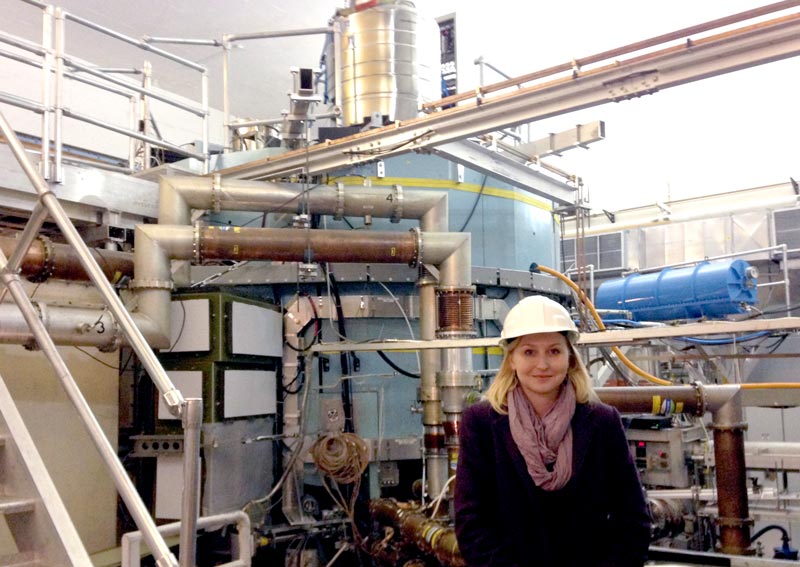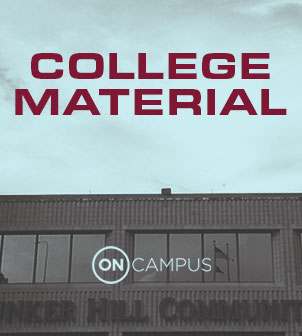
MIT nuclear engineering professor Anne White stands in front of a tokomak. (Craig LeMoult/WGBH)
MIT scientists are presenting a report Monday at the American Association for the Advancement of Science that describes what they call America’s growing innovation deficit.
Physics professor Marc Kastner says their key audience is candidates running for president.
“That would be our hope, that they would realize that this is an issue that historically both Democrats and Republicans have supported, and it doesn’t take that much money on the scale of federal budgets to make a huge difference,” Kastner said.
Kastner says the federal government’s investment in research is the lowest it’s been since World War II, as a fraction of the federal budget or of gross domestic product.
“If you look at the technologies that have made our lives better, you’ll find that they depend on research that was done often decades earlier by people who had no idea what the science may be good for,” he said.
For example, Kastner says, the GPS systems we use today depend on atomic clocks.
“Atomic clocks were invented in the 1940s in an effort to test Einstein’s theory of gravity,” he said.
Kastner says the report isn’t just scientists looking for more funding for their own research. The funding they’re asking for would go to universities around the country — and they’re focusing on areas of research that have great national importance — like finding treatments for Alzheimer’s.
“Over the course of the last two and a half years, 27 new cancer drugs were approved by the U.S. [Food and Drug Administration]," said Andrew Lowe, a professor of finance at MIT. "Over the course of the last decade, there have been zero Alzheimer’s drugs approved.”
"And it’s not because people don’t care about Alzheimer’s," he said. "It's because we don’t have the basic scientific knowledge to know what to go after in terms of the mechanisms of the disease."
Lowe says there’s no money in basic research, so pharmaceutical companies don’t invest in it. He says it’s up to the government to fund that early research, and then pharma companies can build on that.
Legislation signed in 2011 promised hundreds of millions of dollars for Alzheimer’s research, but Lowe says little of that has been released.
"I think the holdup is Congress, at this point, with the sequester and other challenges, it’s been very difficult to get large amounts of funding through Congressional approvals," Lowe said.
The report details a list of fields in need of more funding, including cybersecurity, space exploration, plant sciences, infectious disease, and robotics. MIT aeronautics and astronautics professor Emilio Frazzoli says other countries are already designing and building most of the robots used for industrial purposes. And he says we’re now at risk of falling behind when it comes to robots out in the world, like driverless cars.
"Foreign countries at this point are recognizing that there will be a huge market for these new kind of robots, and they’re investing huge amounts of funding in further developing this," he said. "So there is the concern that even though we are leading the pack now, we could lose this position of dominance in the near future unless we invest as much."
How will we power those robots of the future? If MIT nuclear engineering professor Anne White has her way, robots, and everything else, would be powered by nuclear fusion.
White showed me a very large, concrete-walled room, covered with a lot of strange looking tubes, which houses a machine is called a tokomak.
“We’re looking at one of the 10 major research tokomaks that exist in the world,” White said.
It wasn't on, but if it had been, radio waves would've been shooting through those tubes and heating up plasma inside to 100 million degrees — basically creating a small sun. White says this process could be the source of unlimited, safe and clean energy, without the risk of meltdowns or creation of radioactive waste.
But before that can happen, she says, more basic research is needed into the superconducting magnets that keep all this activity contained.
“The joke is that fusion is 50 years away and always will be," she said. "That’s a reality, if we don’t invest at the level we need to in basic research to make leaps ahead.”
Whether that happens, she says, is up to politicians like the ones they’re trying to reach with their report.










